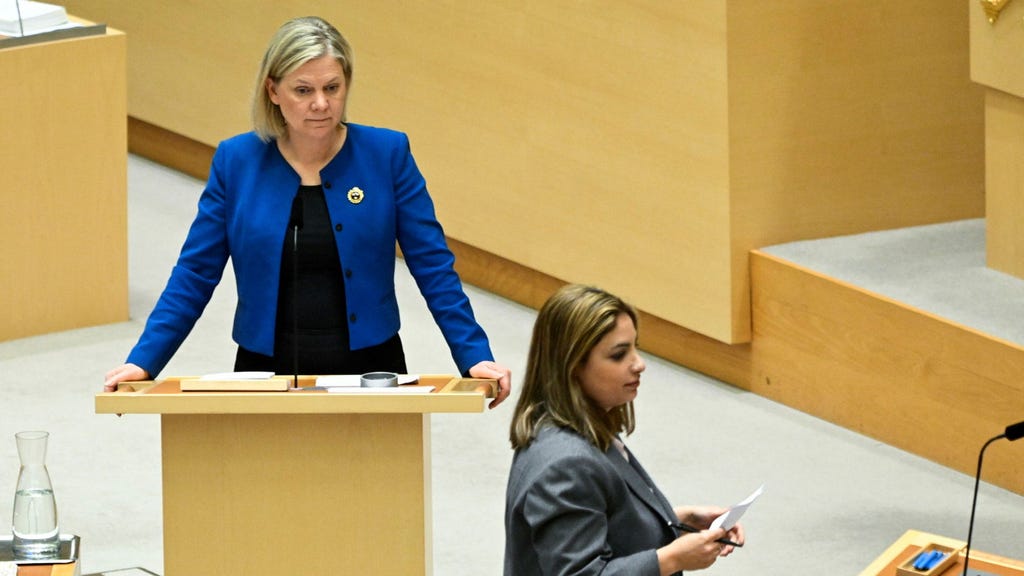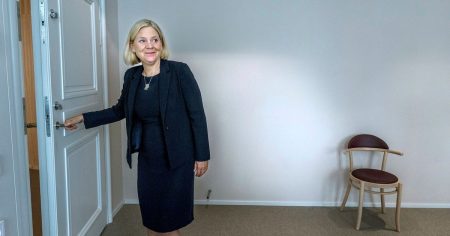The Swedish political landscape is bracing for a tumultuous election cycle, dominated by complex coalition dynamics and internal party struggles. Magdalena Andersson, leader of the Social Democrats (S), remains tight-lipped about her preferred coalition partners, emphasizing post-election negotiations. This ambiguity, however, sends a clear message to the Left Party (V) and its leader, Nooshi Dadgostar: a coalition government is not on the table. This stance isn’t rooted in recent accusations of antisemitism within V’s ranks, but rather in strategic calculations. Andersson fears that a pre-election commitment to V would alienate centrist voters and hand the right-wing bloc, often referred to as the Tidö parties, a potent weapon: the ability to paint the Social Democrats as beholden to a radical fringe. This could drive moderate, undecided voters—the very demographic that often determines election outcomes—into the arms of the right. The Social Democrats are prioritizing their ”Magda Moderates,” a segment of the electorate drawn to Andersson’s pragmatic and arguably more centrist approach.
Dadgostar’s recent attempts to address the controversy surrounding antisemitism within her party are not primarily aimed at appeasing the Social Democratic leadership. Instead, they are a strategic maneuver to maintain credibility among Social Democratic voters, whose support is crucial for V’s bargaining power. It was this very cross-party sympathy that empowered Dadgostar to challenge the previous S-led government on rent control, ultimately leading to its collapse. If S voters perceive V as harboring antisemitism, Dadgostar’s negotiating position weakens significantly. The Social Democrats’ cost of partnering with a perceived extremist party decreases, potentially forcing V to accept a less favorable deal. The Left Party leadership is acutely aware of this vulnerability and is keen to avoid being forced into a compromised position.
Andersson understands that even if the opposition wins the next election, V is unlikely to facilitate a right-wing government. While she might endure protracted negotiations and multiple parliamentary rounds, she likely calculates that V will ultimately agree to an extra-parliamentary collaboration, albeit reluctantly, to prevent a right-wing takeover. However, this tactical advantage comes with a significant risk: a potentially divisive intra-opposition battle during the election campaign. This infighting could mirror the 2022 election, where internal disagreements hampered the opposition’s effectiveness and ultimately contributed to their defeat.
The coalition conundrum isn’t confined to the left. The Liberal Party (L), a smaller party within the right-wing bloc, is grappling with its own internal divisions regarding cooperation with the Sweden Democrats (SD), the largest party on the right. Party leader Johan Pehrson recently reiterated his opposition to including SD ministers in any future government, a stance that risks alienating voters who supported the right-wing bloc on the understanding that it would form a cohesive governing coalition. Pehrson’s public declaration underscores the deep internal divisions within the Liberals and foreshadows a potentially damaging internal debate as pressure mounts to concede ground to SD. The party is teetering on the brink of parliamentary extinction, having barely scraped through the last election thanks to its pledge to support a right-wing government. Unlike the Left Party, the Liberals have little room for maneuver.
Both the Left Party and the Liberals find themselves trapped by the complexities of the regeringsfrågan—the question of government formation. Each party is locked into a rigid position, while their respective coalition partners exert relentless pressure for compromise. This dynamic creates a volatile political environment, where internal party struggles and strategic maneuvering overshadow substantive policy debates. The upcoming election campaign promises to be a high-stakes game of brinkmanship, with the future of several parties hanging in the balance.
These intricate pre-election power plays highlight the fragility of Swedish coalition politics. The pursuit of power within each bloc is intertwined with the need to maintain a semblance of unity and appeal to a diverse electorate. Both the Left and Liberal parties face a critical dilemma: uphold their core principles and risk political marginalization or compromise their values for the sake of political survival. This delicate balance will shape the political landscape in the lead-up to the election and ultimately determine the composition and direction of the next Swedish government. The ”regeringsfrågan” is not merely a theoretical debate; it’s a high-stakes game of political chess with real-world consequences for the future of Sweden.














